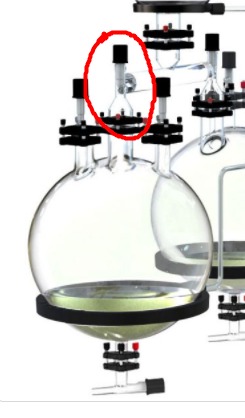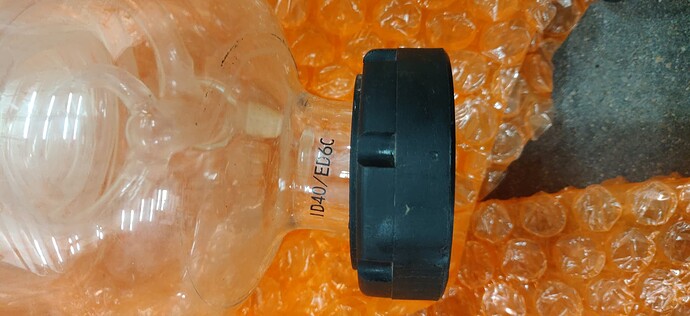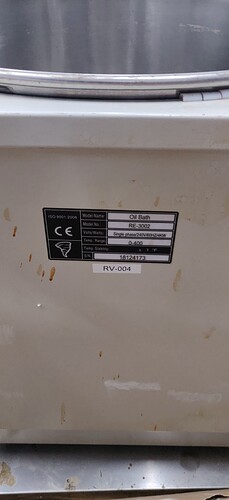Hello,
We recently bought a rotovap from auction, and it is missing the receiving flask. I’m working on getting the correct flask, but I would really like to also get this type of valve in the photo so we can isolate the receiving flask for draining without breaking vac on the whole system. Does anyone know what this specific type of valve is called or where to find it? This photo is from AI and it’s for their dual receiving flask kit for a 50L roto. We’re only purchasing one receiving flask, so we don’t need this entire setup, just that valve. Any help is appreciated! ![]()

is this what you mean?
edit: didn’t read your entire post, the valve is looks like a high vacuum ptfe plug
Anyone know what that type of joint is actually called?
Without knowing what make & model of rotovap you have this is a shot in the dark, but some rotary evaporators have pop up gaskets/valves between the bottom of the lower condenser and the receiving flask, so that once you break vacuum on the receiving flask it pops up and isolates the rest of the rotovap (which is still under vacuum) from the receiving flask which is at atmospheric pressure and the liquid it contains can be drained into a bucket or hooked to a transfer pump. Putting the receiving flask under vacuum will cause the pressures on the top and bottom of the pop up to equalize, the pop up drops back to the open position and any liquid can drain to the receiving flask again
Get rid of the whole flask and switch to kegs.
You will thank me later.
Thats a chinesium flat joint, they make em in china.
I got almost that exact answer from someone else lol
I’m just trying to figure out if there’s a standard for them or if it’s brand inter-compatibility hell
Its hell until you realize that every single one can be converted to a tri-clamp
After that its fuckin’ smooooooth sailing
We never got to hang in the PNW- i was casting all of my own gaskets with liquid viton- once you start casting your own gaskets the world is essentially a chem resistant, heat tolerant, rubber oyster
Some Chinese people call them “pagoda type”.
I think it would be wiser to first put an adapter in between the pagoda and triclamp. ![]()
Pagoda to wide flexible hose, then wide hose to triclamp (or compression).
Should reduce the likely hood of leaks, and also reduce the mechanical stress on the glass condenser part (and risk of breaking it).
Does qvf glasss wear fit ?
The sell every part ever produced since the 1980 s
I used flexible hoses later on for precicely this reason, stress on the glass from turning the ball valve made me itchy
I ended up replacing the condensers with steel/copper cuz glass sucks for heat transfer
I had an AI roto a friend loaned me, but that isolation valve leaked an would not hold vacuum. With the serial number of the whole unit, the folks at AI tech support had a replacement to me in 24 hrs. And not too pricey.
But then ain’t you getting a little bit the same issue at the connection between condenser inlet and the glass evaporator outlet ? ![]()
No i used a 1” flexi hose and had three rotos piped to a single consenser
Ran r404a in the copper lines directly to a heat pump and effectively doubled the evap rate.
I did take pics but the cops in medford stole my phone and i nuked the whole google account off the face of the earth, unfortunately.
Everything AI does is too pricey. They sell $3000 rotovaps for $13k
The first thing you linked is what we need in theory, but we don’t need the dual set up and I don’t think it’s right connection for our cold trap. This is the bottom of the condenser that will be attaching to the receiving flask for reference:
Here’s the model too if that helps. It says RE-3002. Looks like it’s from BVV, but they couldn’t help me with the valve type I want.

